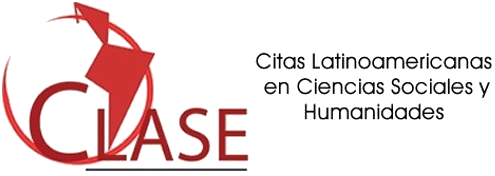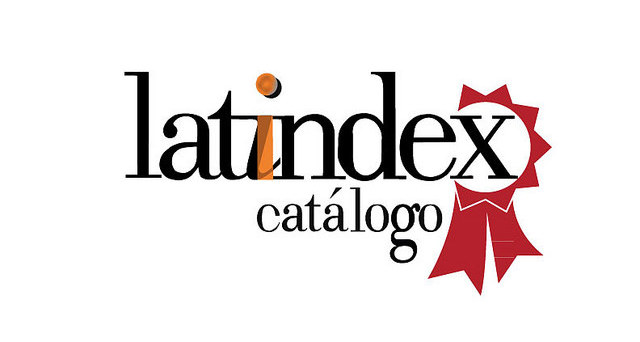Fragments of a Relocation: The Insistence of Images
DOI:
https://doi.org/10.29340/en.v5n9.227Keywords:
“the obtuse”, images, visual practices, ethnography, collectionsAbstract
The extraction and relocation of the pre-Hispanic monolith known as “Tlaloc” from San Miguel Coatlinchan to the National Museum of Anthropology (Museo Nacional de Antropología) in 1964 were captured through the production, circulation, arrangement, and storage of different types of images. These images have been organized using different processes of montage that sought to somehow fix the event and, which are therefore deeply political. Following Roland Barthes’ invitation to “listen to” images to access their “obtuse sense”, I resort to ethnography as a way of addressing the resonances and the affective ties that cannot be contained within the edges of their frames and insist on interrupting any effort towards their logical and temporal arrangement.
Downloads
References
Andrade, Xavier, y Gabriela Zamorano (2012). “Antropología visual en Latinoamérica”. Íconos-Revista de Ciencias Sociales, núm. 42, pp. 11-16. https://doi.org/10.17141/iconos.42.2012.359 DOI: https://doi.org/10.17141/iconos.42.2012.359
Barthes, Roland (1981). Camera Lucida: Reflections on Photography. Nueva York: The Noonday Press.
— (1986). Lo obvio y lo obtuso: imágenes, gestos, voces. Barcelona: Paidós Ibérica.
Bartra, Roger (2004). “Sonata etnográfica en no bemol”, en Felipe Solís (coord.). Museo Nacional de Antropología, México: libro conmemorativo del cuarenta aniversario. México: conaculta e inah, pp. 331-350.
Benjamin, Walter y Howard Eiland (2002). The Arcades Project. Cambridge: Harvard University Press.
Buck-Morss, Susan (1991). The Dialectics of Seeing: Walter Benjamin and the Arcades Project. Cambridge: mit Press.
Dawson, Alexander Scott (2004). Indian and Nation in Revolutionary Mexico. Phoenix: University of Arizona Press.
Deleuze, Gilles (1990). The Logic of Sense (Mark Lester, trad.). Nueva York: Columbia University Press.
Dorotinsky Alperstein, Deborah (2013). Viaje de sombras: fotografías del Desierto de la Soledad y los indios lacandones en los años cuarenta. México: unam, Instituto de Investigaciones Estéticas.
Editorial Novaro (1964, 1º de octubre). “Una deidad en el asfalto”. Aventuras de la vida real, vol. 9, núm. 106. México: Editorial Novaro.
Edwards, Elizabeth (2001). Raw Histories: Photographs, Anthropology and Museums. Londres: Berg.
— (2009). “Thinking Photography Beyond the Visual?” en J. J. Long, Andrea Noble y Edward Welch (ed.), Photography: Theoretical Snapshots. Londres: Routledge, pp. 43-60.
— (2012). “Objects of Affect: Photography Beyond the Image”. Annual Review of Anthropology, vol. 41, pp. 221-234. https://doi.org/10.1146/annurev-anthro-092611-145708 DOI: https://doi.org/10.1146/annurev-anthro-092611-145708
— y Janice Hart (2004). Photographs, Objects, Histories: On The Materiality of Images. Londres: Routledge. https://doi.org/10.4324/9780203506493 DOI: https://doi.org/10.4324/9780203506493
Feld, Steven (1989). “Themes in the Cinema of Jean Rouch”. Visual Anthropology, vol. 2, núm. 3-4, pp. 223-247. https://doi.org/10.1080/08949468.1989.9966512 DOI: https://doi.org/10.1080/08949468.1989.9966512
Ginsburg, Faye D. (2002). “Screen Memories: Resignifying the Traditional in Indigenous Media” en Faye D. Ginsburg, Lila Abu-Lughod y Brian Larkin (ed.), Media worlds: Anthropology on New Terrain. Stanford: University of California Press, pp. 39-57. DOI: https://doi.org/10.1525/9780520928169
Gola, Patricia (ed.) (1999). Luna Córnea, la maquina de narrar, núm. 18, mayo-agosto. México: conaculta y Centro de la imagen.
González Flores, Laura (2002). “La fotografía como imagen”. Aisthesis: revista chilena de investigaciones estéticas, núm. 35, pp. 23-32.
— (2018). “What is Present, What is Visible: the Photo-Portraits of the 43 ‘Disappeared’ Students of Ayotzinapa as Positive Social Agency”. Journal of Latin American Cultural Studies, vol. 27, núm. 4, pp. 487-506. https://doi.org/10.1080/13569325.2018.1485557 DOI: https://doi.org/10.1080/13569325.2018.1485557
Lomnitz, Claudio (2000). “Bordering on Anthropology. The Dialectics of a National Tradition in Mexico”. Revue de Synthèse, vol. 121, núm. 3-4, pp. 345-379. https://doi.org/10.1007/BF02970494 DOI: https://doi.org/10.1007/BF02970494
Mitchell, William J. T. (2005) What Do Pictures Want?: The Lives and Loves of Images. Chicago: University of Chicago Press. https://doi.org/10.7208/chicago/9780226245904.001.0001 DOI: https://doi.org/10.7208/chicago/9780226245904.001.0001
Morales, Alfonso (2005). Antonio Caballero: las rutas de la pasión : México, 1960-1970. México: Galería López Quiroga.
Mraz, John (2009). Looking for Mexico. Durham: Duke University Press. https://doi.org/10.1215/9780822392200 DOI: https://doi.org/10.1215/9780822392200
Pinney, Christopher (1997). Camera Indica: The Social Life of Indian Photographs. Chicago: University of Chicago Press.
Poole, Deborah (2005). “An Excess of Description: Ethnography, Race, and Visual Technologies”. Annual Review of Anthropology, vol. 34, pp. 159-179. https://doi.org/10.1146/annurev.anthro.33.070203.144034 DOI: https://doi.org/10.1146/annurev.anthro.33.070203.144034
— y Gabriela Zamorano (2012). De frente al perfil. Retratos raciales de Frederick Starr. Zamora: El Colegio de Michoacán.
Ramírez Vázquez, Pedro (2004). “El museo hace cuarenta años”, en Felipe Solís (coord.) Museo Nacional de Antropología, México: libro conmemorativo del cuarenta aniversario. México: conaculta e inah, pp. 29-59.
Rivera Cusicanqui, Silvia (2006). “Construcción de imágenes de indios y mujeres en la iconografía post 52: el miserabilismo en el Álbum de la Revolución”. T’inkazos. Revista Boliviana de Ciencias Sociales, núm. 19, pp. 133-156. https://doi.org/10.31819/9783865278166-014 DOI: https://doi.org/10.31819/9783865278166-014
Redrobe Beckman, Karen y Jean Ma (eds.) (2020). Still Moving: Between Cinema and Photography. Durham: Duke University Press. https://doi.org/10.1515/9780822391432 DOI: https://doi.org/10.1515/9780822391432
Roca, Lourdes (2004). “La imagen como fuente: una construcción de la investigación social”. Razón y Palabra, núm. 37. Recuperado de http://www.razonypalabra.org.mx/anteriores/n37/lroca.html, consultado el 10 de febrero de 2022.
Rouch, Jean (2019). “La caméra et les hommes”, en Claudine de France (dir.), Pour une anthropologie visuelle. París: Gruyter Mouton, pp. 53-72. https://doi.org/10.1515/9783110807400-004 DOI: https://doi.org/10.1515/9783110807400-004
Rozental, Sandra (2011). “La creación del patrimonio en Coatlinchan: ausencia de piedra, presencia de Tlaloc”, en Pablo Escalante Gonzalbo (coord.), La idea de nuestro patrimonio histórico y cultural. México: conaculta, pp. 341-361.
— (2016). “In the Wake of Mexican Patrimonio: Material Ecologies in San Miguel Coatlinchan”. Anthropological Quarterly, vol. 89, núm. 1, pp.181-220. DOI: https://doi.org/10.1353/anq.2016.0007
— (2021). “Monolith on the Street”, en Miruna Achim, Susan Deans-Smith y Sandra Rozental (ed.), Museum Matters: Making and Unmaking Mexico’s National Collections. Phoenix: University of Arizona Press, pp.265-289.
Rubenstein, Anne (1998). Bad Language, Naked Ladies, and Other Threats to the Nation: A Political History of Comic Books in Mexico. Durham: Duke University Press. https://doi.org/10.1515/9780822399919 DOI: https://doi.org/10.1515/9780822399919
Solís, Felipe (coord.) (2004). Museo Nacional de Antropología, México: Libro conmemorativo del cuarenta aniversario. México: conaculta e inah.
Sontag, Susan (1977). On Photography. Londres: Penguin.
Spyer, Patricia (2001). “Photography’s Framings and Unframings: A Review Article”. Comparative Studies in Society and History, vol. 43, núm. 1, pp.181-192. https://doi.org/10.1017/S0010417501003632 DOI: https://doi.org/10.1017/S0010417501003632
Spyer, Patricia y Mary M. Steedly (ed.) (2013). Images that Move. Santa Fe: School for Advanced Research.
Stewart, Kathleen (2003). “Arresting Images”, en Pamela R. Matthews y David Mcwhirter (ed), Aesthetic Subjects. Minneapolis: University of Minnesota Press, pp. 431-448.
Strassler, Karen (2010). Refracted Visions: Popular Photography and National Modernity in Java. Durham: Duke University Press. https://doi.org/10.1215/9780822391548 DOI: https://doi.org/10.1215/9780822391548
Sutton, Damian (2009). Photography, Cinema, Memory: the Crystal Image of Time. Minneapolis: University of Minnesota Press.
Vázquez Mantecón, Álvaro (2011). “Alegorías, metáforas y símbolos en el cine sobre la Revolución mexicana”. Caravelle. Cahiers du monde hispanique et luso-brésilien, núm. 97, pp. 165-179. https://doi.org/10.4000/caravelle.1441 DOI: https://doi.org/10.4000/caravelle.1441
Villarreal Galicia, Guadalupe (2014). La piedra de los tecomates “Chalchihuitlicue” Por siempre en Coatlinchan. Texcoco: Los Libros de la Capilla.
White, Hayden (1990). The Content of the Form: Narrative Discourse and Historical Representation. Baltimore: Johns Hopkins University Press. DOI: https://doi.org/10.1353/book.98234
Wright, Chris (2004). “Material and Memory: Photography in the Western Solomon Islands.” Journal of Material Culture, vol. 9, núm. 1, pp.73-85. https://doi.org/10.1177/1359183504041090 DOI: https://doi.org/10.1177/1359183504041090
Zamorano Villarreal, Gabriela (2018). “An Expected Revolution? Visuality, Autodefensas, and Imaginaries of Citizens’ Self-Protection in Mexico.” Anthrovision, vol. 6, núm. 2. https://doi.org/10.4000/anthrovision.3861 DOI: https://doi.org/10.4000/anthrovision.3861
Zirion, Antonio (ed.) (2022). Redescubriendo el archivo etnográfico audiovisual. Ciudad de México: Elefanta Editorial.
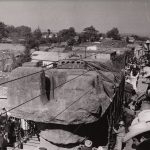
Published
Issue
Section
License
Copyright (c) 2022 Encartes

This work is licensed under a Creative Commons Attribution-NonCommercial 4.0 International License.
Aviso de derechos de autor
- Los autores/as conservan los derechos de autor y ceden a la revista el derecho a la primera publicación con el trabajo registrado con la licencia de atribución Creative Commons, que permite a terceros utilizar lo publicado siempre que mencionen la autoría del trabajo y a la primera publicación en esta revista
- Los autores/as pueden realizar otros acuerdos contractuales independientes y adicionales para la distribución no exclusiva de la versión del artículo publicado en esta revista (por ej. Incluirlo en un repositorio institucional o publicarlo en un libro) siempre que indiquen claramente que el trabajo se publicó por primera vez en esta revista.
El material puede ser copiado, distribuido, comunicado, ejecutado públicamente. Se pueden hacer obras derivadas de él. No se puede utilizar para fines comerciales. Se debe reconocer y citar la obra de la forma en que tú especifiques.

